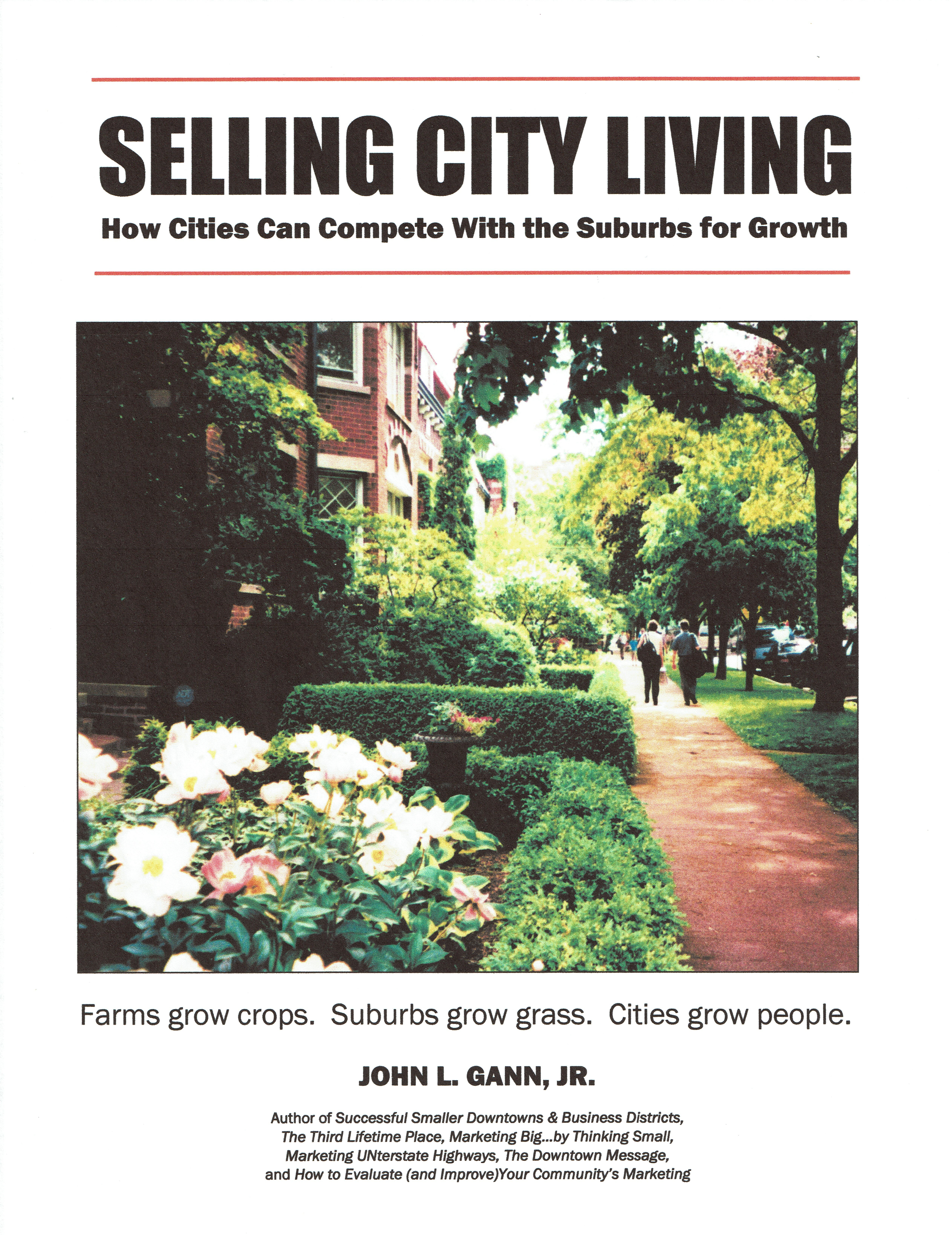Making Cities Competitive as Places to Live
That, says John Gann, can change. Unless we want more Detroit-style decay and bankruptcy, he adds, it has to.
Cities are simply products in the marketplace, John explains, that have been losing many of their customers to competitors and failing to attract enough new ones. Their suburbs gave cities their first real competition, to which they utterly failed to respond.
The suburbs sold because they were well marketed. The cities were not.
To come back, John argues, cities need strong marketing just like any product in trouble. But marketing is a remedy almost completely ignored by urban experts.
Now that can change. Cities can sell themselves. A unique, action-oriented manual, Selling City Living: How Cities Can Compete With the Suburbs for Growth tells you how.
The next step is to define who to sell to in marketing programs and what cities can sell.
Selling City Living.
In Selling City Living John spells out specifics for each.
The 14 consequences of population loss, p. 6
Nine reasons suburbs sold better than cities, p. 8
Nine ways to make cities more marketable, pp. 15-28

How suburban success can benefit cities, p. 76
Why cities must be sold even to city-living immigrants and minorities, p. 26
How to deal with perceptions about crime and poor schools, pp. 31-34
What's good and bad about cities' "free college" programs, p. 35
Ways cities are better places for kids than suburbs, p. 59